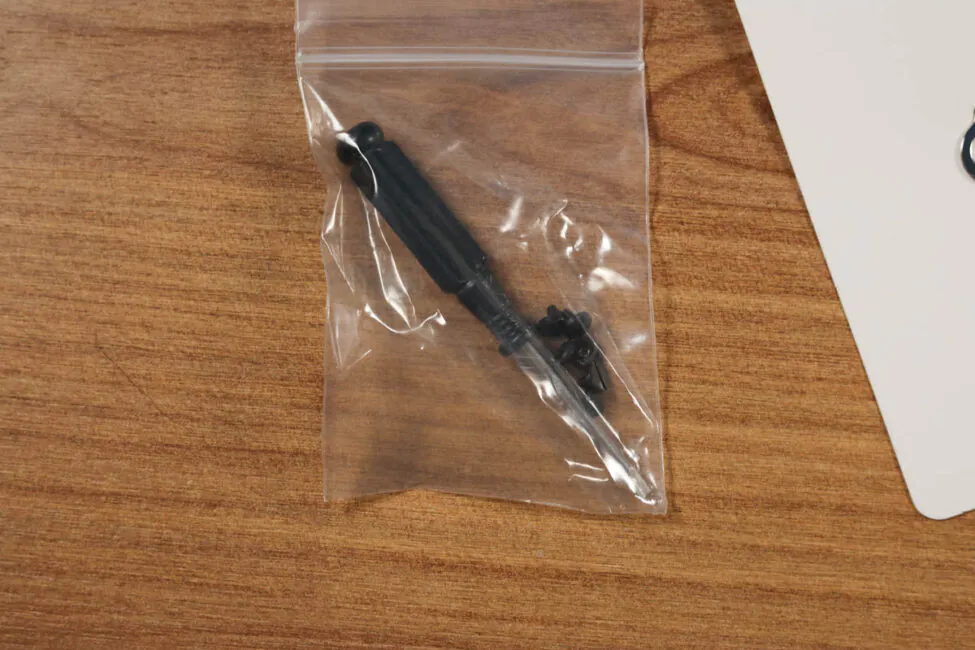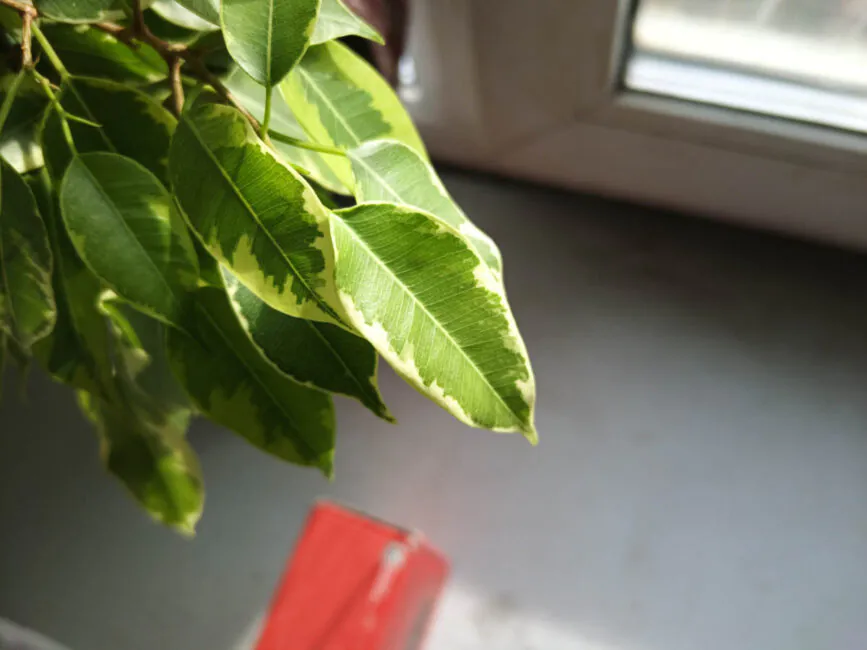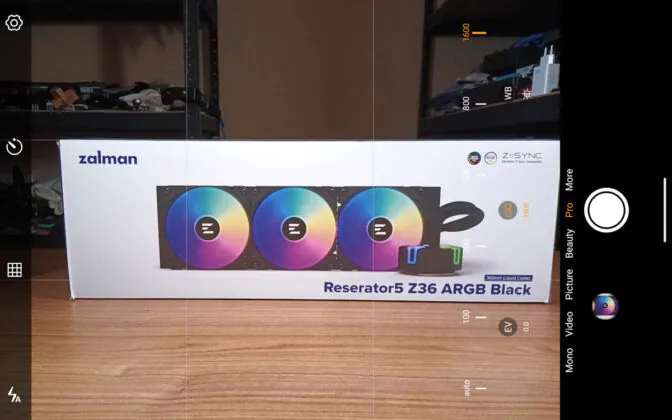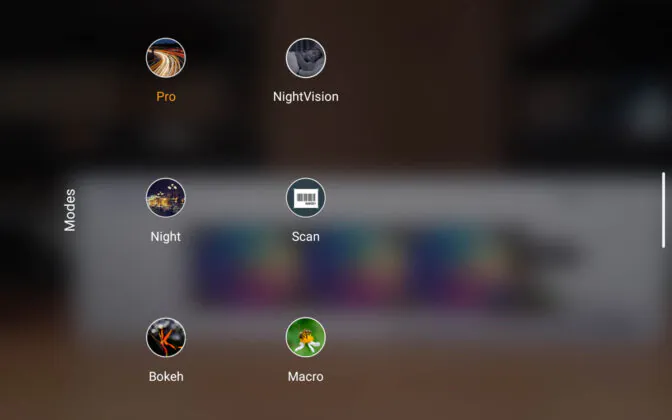© ROOT-NATION.com - Use of content is permitted with a backlink.
For me, modern Android tablets fall into three categories. The first is basic touch screens with minimal power and price—I use one of these as a teleprompter. The second is Android alternatives to laptops for keyboard work, costing around $1000. And the third is rugged devices for maximum durability. The Oukitel RT8 belongs to the latter category.

Specifications
- Chipset: MediaTek Helio G99
- Processor technology: 6nm
- Maximum CPU frequency: 2.2 GHz
- Memory Type: LPDDR4X
- GPU: ARM Mali-G57 MC2
- RAM: 6+6GB
- ROM: 256GB
- Storage Type: UFS 2.2
- Memory card slots: microSDXC
- Operating System: Android 13 (Tiramisu)
- Battery: Li-Pol, 20000 mAh
- Wired charging speed: 33W
- SIM cards: Dual SIM
- SIM type: nanoSIM
- Wi-Fi standards: 4/5
- Bluetooth: 5.1
Market positioning
However, it’s important to understand that rugged devices don’t have a single positioning. I mean, Android tablets with ruggedized bodies are used by builders, tourists, and even children. They have similar feature sets, but their speed, convenience, and individual nuances can vary greatly. And so does their cost, by the way.

Here, the hero of the review is in a tricky position because the cost of the Oukitel RT8 is almost exactly $300. That is, you wouldn’t want to give such a tablet to a child, but a quick Google search will show how democratic this price is. My colleague, after a superficial examination of the tablet, estimated the price to be twice as much as it actually is.
Package contents
The device comes with a rich set of accessories. In addition to the tablet itself, the box also includes a universal Type-C charger, a Type-C cable, a SIM card slot key, and a basic instruction manual. I expected to find a screen protector pre-applied at the factory – and I got it. Though, I didn’t expect that I almost removed it along with the plastic coating.
I also didn’t expect to see a handle, mounting brackets, or two straps included in the package. But they were included. I’ll explain later why all of this is needed.
Appearance
The Oukitel RT8 looks exactly like a modern rugged tablet should. I mean, it’s not just a cheap Android smartphone with an unusually large display that’s sealed in a cheap protective bumper from the factory. No, the design of the RT8 is clearly intended from the start to provide protection against environmental factors.

Protective protrusions on the edges are present, and the body is rubberized. The camera module… is unmistakably conspicuous. Such a module belongs only on rugged devices; it’s too rugged and expressive for regular ones.

And the four threaded holes also speak volumes about the device’s uniqueness.
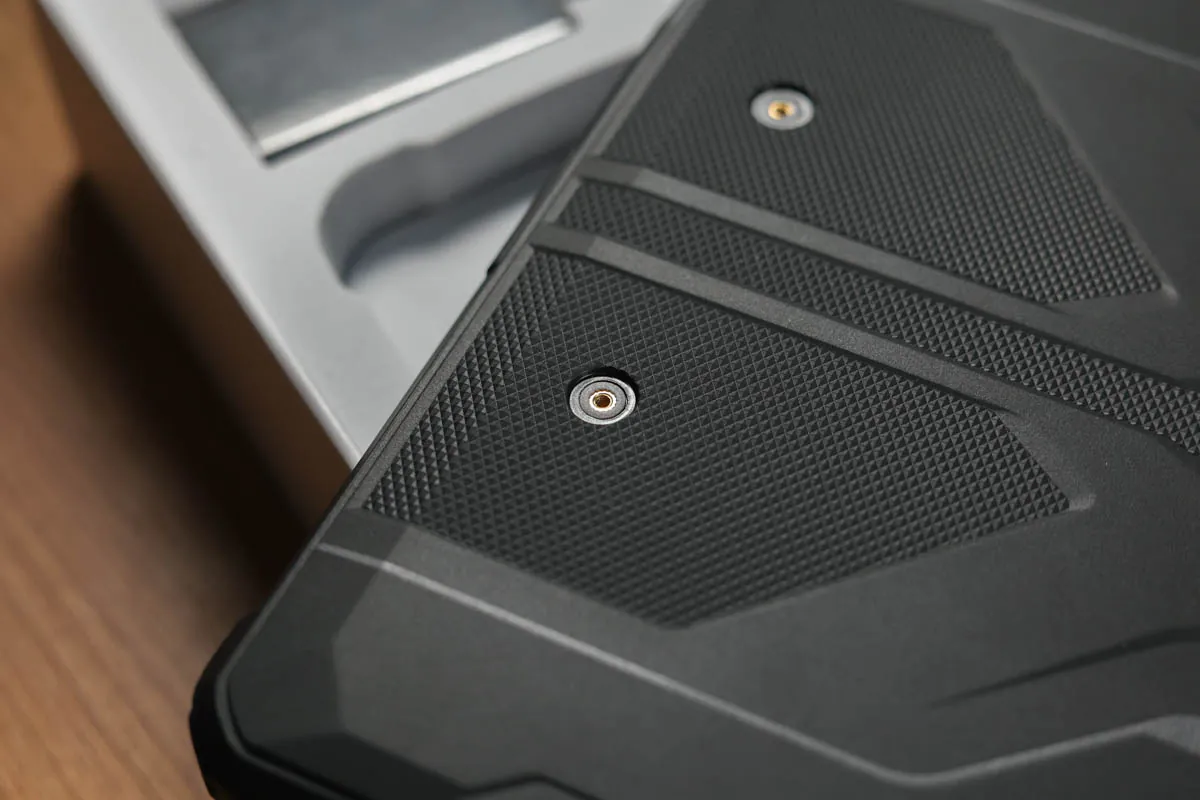
They screw in the included screws – among which there are several spares – and separately, a tiny flat screwdriver. The screws are used to attach either the strap mount or the mount with a metal handle.

You can attach the straps to both, and both straps simultaneously.

One is screwed in the center and clamped, while the other is threaded through separate loops in the metal.

So, you have four ways to carry the Oukitel RT8 – simply holding it in your hands, using the metal handle, or using one of the straps.

Having multiple ways to hold the tablet doesn’t mean you won’t accidentally drop it, say, on your leg. But it’s not recommended, as with dimensions of 265.1×176.7×15.1 mm, the tablet weighs almost 1 kg. Add to that the relatively sharp, albeit rubberized, edges, and you’ll feel the pain if you drop it.

My specific version of the device also had a slightly curved handle, which, due to its asymmetry, didn’t allow the tablet to stand perfectly flat. The weight of the additional mounting was 150 g. However, neither the handle nor the mounting itself directly hindered the use of the device; everything was positioned quite ergonomically.

UPDATE: It turns out that the handle can be adjusted before screwing it to the tablet; it rotates on an axis in relation to the brackets, so you just need to place the brackets parallel to each other.
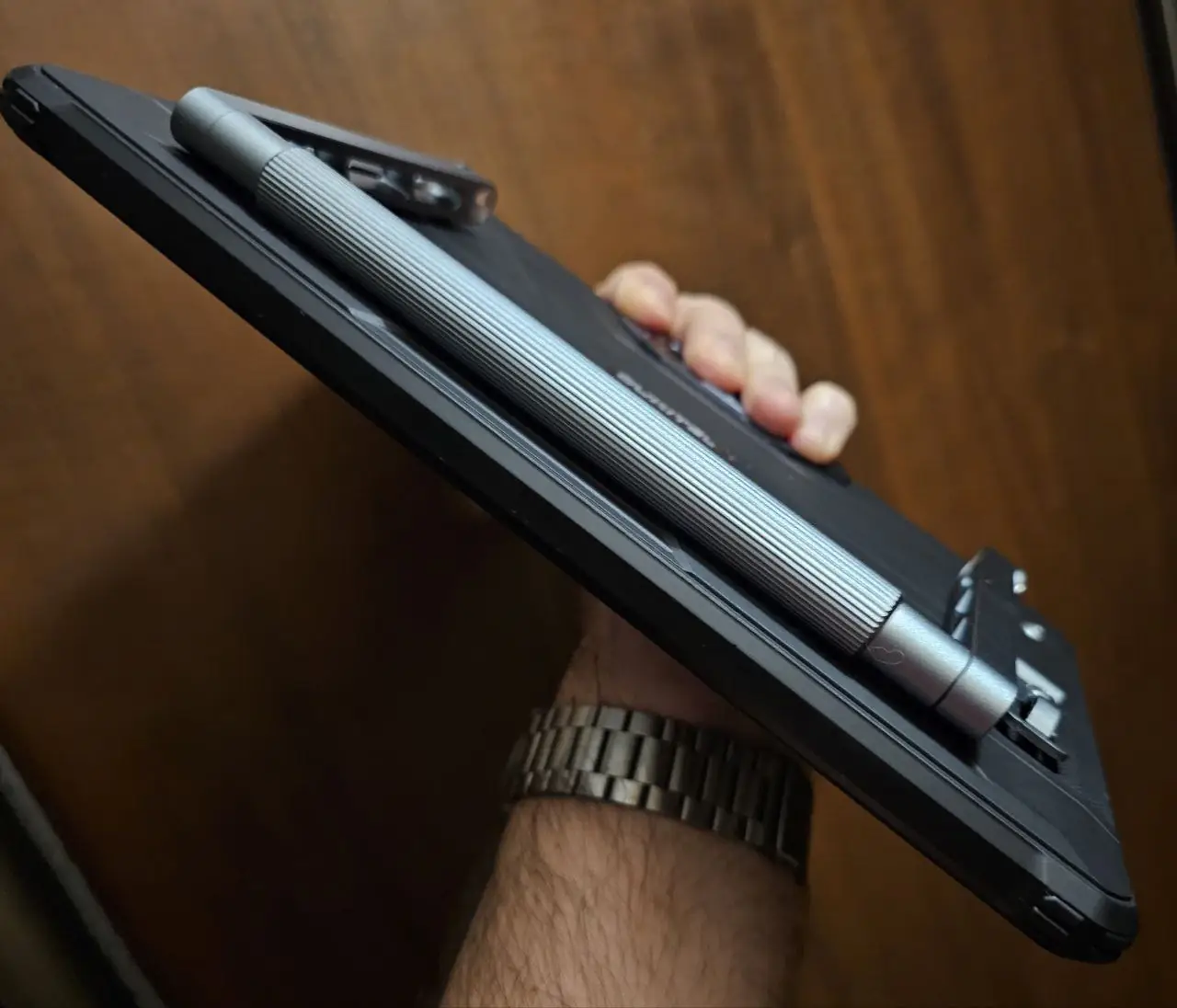
I’ll also note that the tablet is available in two colors – with orange accents and silver. I much prefer the first option. And I’ll remind you that the handle is not rubberized anywhere, so I highly recommend against using it on surfaces that can be easily damaged.
Ergonomics
The control buttons are located on the top edge, to the left, near the camera and the LED indicator. The layout is standard – volume and power buttons. Here, I’ll jump ahead and mention that the tablet lacks any fingerprint scanner unlocking feature.

Both the Type-C port and the combined SIM/microSD slot are hidden under thick plugs. And not without reason, as the manufacturer promises IP68, IP69K, and MIL-STD-810H protection. Why are they listed separately when MIL-STD-810H seems to cover both previous standards? But that’s not the case.

Oukitel RT8 Protection
The presence of MIL-STD-810H covers significantly more aspects than IP68. The Oukitel RT8 doesn’t just look very rugged for no reason – the tablet can withstand impacts, vibrations, drops, storage at temperatures up to 63°C for over a week, operation at temperatures up to 49°C for three days, and can operate in temperatures as low as -49°C.

What doesn’t MIL-STD-810H mention? Water protection. That’s where IP68/IP69K comes into the picture. The latter is the highest and best degree of protection against water and dust. A tablet with closed slots can be stored in an aquarium and nothing will happen to it for months. Which for builders is certainly useful.

I’ll also note an unexpected thing. Ergonomically, the tablet is significantly better than it has the right to be. Yes, it’s heavy and bulky – 11 inches – and using it feels like handling, say, an electrician’s gloves. But the buttons are either at the top or at the bottom – depending on how you set up the handle. And the handle itself serves as a stand at almost any angle, except for the sharpest one.
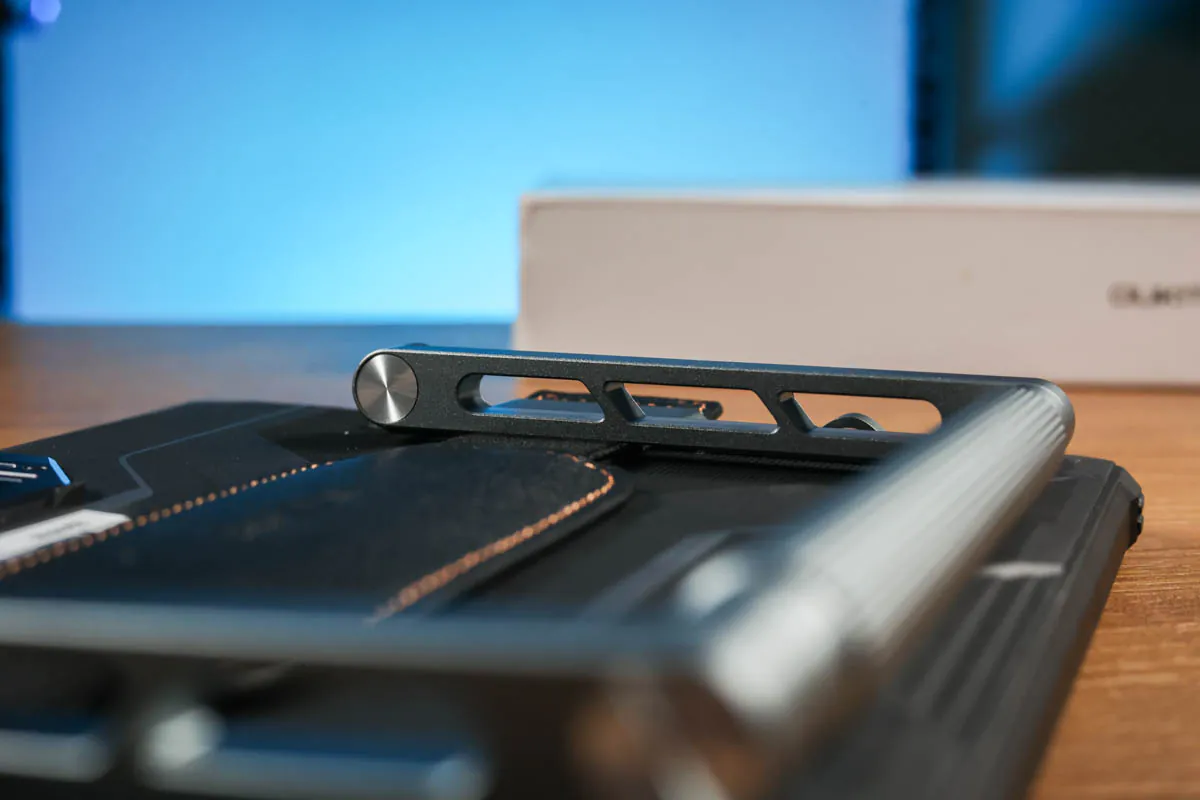
And the hinges on the handle are strong enough for me to easily operate the touchscreen, using the handle as a stand. Surprisingly, it’s also comfortable to shoot videos – the large size and weight prevent shaky hands, which somewhat compensates for the complete lack of stabilization in the cameras.
Display
By the way, about the screen. The Oukitel RT8 features an 11-inch IPS display with a resolution of 1920×1200 pixels, brightness up to 500 nits, a refresh rate of up to 90 Hz, Corning Gorilla Glass 5 protection, and an 80% screen-to-body ratio. On paper, the display looks good, but there are two downsides. The first is ghosting, which is residual images left after the display refreshes. Quickly dragging menu text downward leaves mini-ghosts of the text behind..

I was expecting something similar, but I didn’t expect it to be THAT noticeable. Even the 90 Hz doesn’t salvage the situation. There’s also a noticeable drop in brightness at a 45-degree angle. However, the maximum brightness is even excessively bright, as the manufacturer promised, but I even think it’s significantly more than 500 nits. Overall, the display on the RT8 looks utilitarian and fulfills its function of displaying information, and the 90 Hz is essentially for speeding up device interaction, and, well, it looks good in marketing terms.
Performance
It seems that unofficially the RT8 has two versions. The second one, which I have for review, is supposed to be officially available for purchase only from April 5, 2024. This version has 6 GB of RAM and is powered by the MediaTek MT8781 SoC, also known as the MediaTek Helio G99. There is also another version of the tablet with 8 GB of RAM and the MediaTek MT8788. I suspect that it has been on the market for quite some time, as it can be purchased before the official release.

I have a theory that this is just a mix-up, and that the “old” version of the RT8 is not actually the RT8, but rather, let’s say, the RT6, which some unscrupulous store decided to rename as the new model. But I can’t be sure, and you shouldn’t expect any accusations from me.
Read also: Oukitel WP27 Review: Solid Rugged Budget Phone
You should know that the MediaTek Helio G99 is a 6-nanometer SoC released in 2022, featuring two Cortex-A76 cores and six Cortex-A55 cores, with clock speeds of 2200 and 2000 MHz, respectively. Similar chipsets are found in devices like the Poco M6 Pro, several Tecno and Infinix models, and the relatively new Redmi Note 13 Pro 4G. We either already have or will soon have a comprehensive comparison of this chipset, along with the entire Redmi Note 13 lineup.

The GPU here is the Mali-G57 MC2, and the total AnTuTu score is around 400,000 points. So, it’s a mid-budget setup leaning towards the entry level. All games run, at the very least, on the lowest graphics settings, but sometimes even at 60 FPS.

In some cases, you need to manually switch to 60 FPS, like in Genshin Impact, while in other cases, it triggers automatically, like in Call of Duty Mobile. Meanwhile, PUBG barely reached 30 FPS even on the lowest settings.

The main issue with games on such a device is not the power itself. The problem lies in the experience of some (not all, only some, and this is important) games at high refresh rates not being very pleasant. It’s all about the display. Well, excuse me, if I can’t tell by the smoothness of the interface whether I have 30 frames per second or 90, then what difference does it make if the game runs on the SoC?
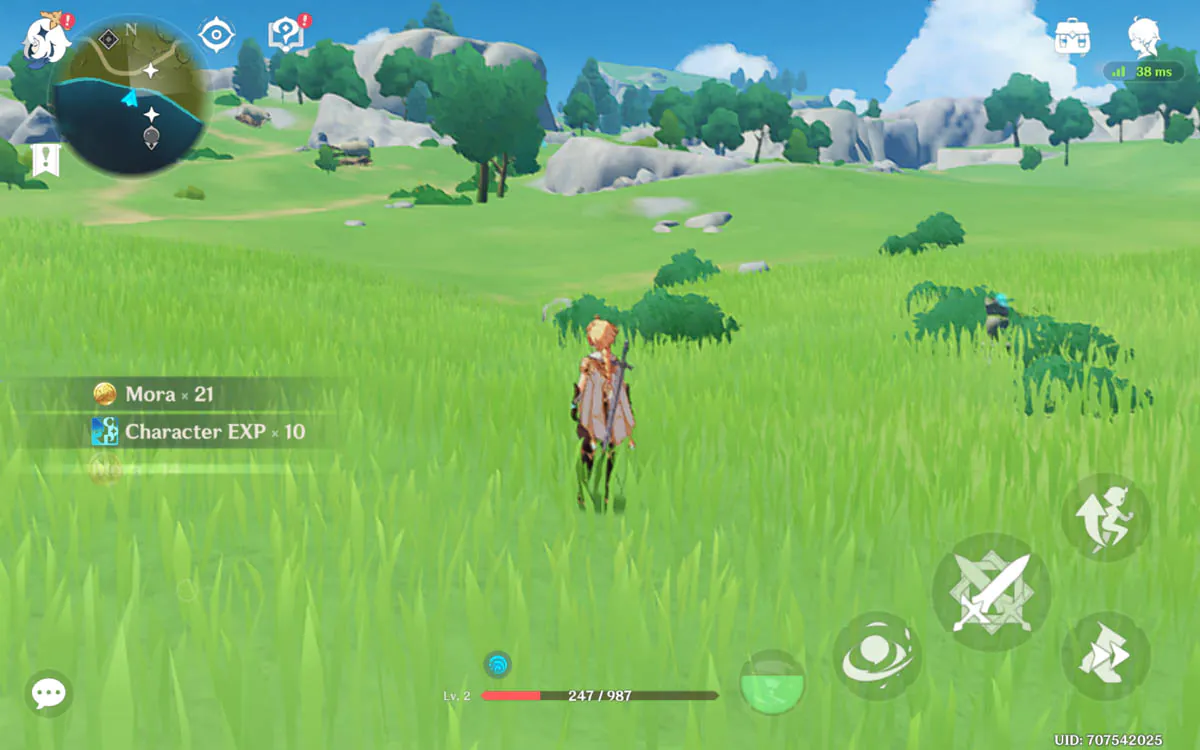
What difference does it make to the user whether the Oukitel RT8 runs games at 60 FPS if the user is a construction worker or a tourist?
Let’s conclude this section by noting that the tablet hardly heats up. In stress tests with 3DMark, stability was noted as >99%. In separate software stress tests, I was able to decrease performance by 9%, but only after 40 minutes of intensive and unrealistic load. I’m sure you won’t be rendering 3D models on a MediaTek.
Data transmission and audio capabilities
Moreover, data transmission here is generally adequate. There is support for Wi-Fi 4 and Wi-Fi 5, Bluetooth 5.1. There’s no 5G, but NFC is present. In a SpeedTest on the ASUS RT-AXE7800 router, the tablet delivered 330 Mbps for both download and upload, and very consistently. As for real Internet speed, demonstrated by downloading files in Genshin Impact, it reaches up to 25 MB/s.

The tablet supports GPS, Glonass, Beidou, and Gallileo, and also features OTG support. The audio capabilities of the reviewed device consist of four speakers, which are both loud and deliver sound with the right amount of volume. However, there is no headphone jack.
Oukitel RT8 Cameras
The Oukitel RT8 has three main cameras and one front-facing camera.
 The specifications on paper, considering the price, are quite impressive. It features a 48-megapixel SONY IMX582 module with an aperture of F/1.79, a 79-degree field of view, and a 1/2″ sensor size. It includes phase-detection autofocus, a flash, and support for shooting 2K video at 30 FPS. However, there is no stabilization. The macro module is a 5-megapixel Sony S5K5E8 with a 1/5″ sensor size, an aperture of F/2.2, and an 83-degree coverage angle. The focus is fixed.
The specifications on paper, considering the price, are quite impressive. It features a 48-megapixel SONY IMX582 module with an aperture of F/1.79, a 79-degree field of view, and a 1/2″ sensor size. It includes phase-detection autofocus, a flash, and support for shooting 2K video at 30 FPS. However, there is no stabilization. The macro module is a 5-megapixel Sony S5K5E8 with a 1/5″ sensor size, an aperture of F/2.2, and an 83-degree coverage angle. The focus is fixed.
The front camera is a 32-megapixel Samsung S5KGD1SP03 with a sensor size of 1/1.8″, an aperture of F/2.2, and a coverage angle of 78 degrees. It has fixed focus, and video recording is up to FHD 30 FPS.
Separately, one of the most valuable features of the tablet is its night vision camera, a 20-megapixel Sony IMX350. It has a sensor size of 1/2.78″, an aperture of F/1.8, autofocus, and uses an infrared emitter for illumination.
 This is NOT a thermal camera; it is indeed a night vision camera that, while operating at short distances, genuinely sees in the dark. It even captures videos. As I was informed, it’s simply surveillance camera technology, but the utility of the solution is undeniably positive. It works, albeit with a peculiar change in perspective when switching to video.
This is NOT a thermal camera; it is indeed a night vision camera that, while operating at short distances, genuinely sees in the dark. It even captures videos. As I was informed, it’s simply surveillance camera technology, but the utility of the solution is undeniably positive. It works, albeit with a peculiar change in perspective when switching to video.
There’s a macro shooting mode that even performs better than the primary module with digital zoom. It’s evident, as the only worse in quality are the 2-megapixel disasters, such as those found in the entire Redmi Note 13 lineup.
Examples of photos and videos in full quality here
The camera app looks and feels outdated, although it has an interesting approach. All settings—absolutely all—are not placed in a separate menu window but are directly accessible in the camera interface, opening on the left side. On a smartphone, such an approach would be cumbersome, but on a tablet, it’s entirely appropriate because there’s simply enough space for it.
There are few shooting modes, but the most essential ones are available, including document and barcode scanning.
Software
The interface on the Oukitel RT8 is peculiar. On one hand, it visually resembles Android 11 but with a very outdated design. On the other hand, the manufacturer claims it’s running Android 13. I’ve never personally seen Android 13 on tablets, but something tells me it shouldn’t look… visually antiquated, to say the least.

Moreover, the interface is not stock Android. It has minimal additional features, but there’s button customization with a choice of five options, not just two. You can also allocate RAM from the internal storage, up to 6 GB.

There’s also a DuraSpeed mode to accelerate app performance, akin to prioritizing RAM. Additionally, there’s a separate camera mode for underwater photography and the ability to adjust the screen color palette with three presets. Apart from these, it’s essentially Android 11, just with recent security patches.

I’ll say a few words about glitches because honestly, I haven’t encountered them on Android for a long time. Firstly, when I configured the control buttons, adding the notification shade toggle button, but forgot to switch the buttons to gestures, I got a gray square on the screen instead of the new button.
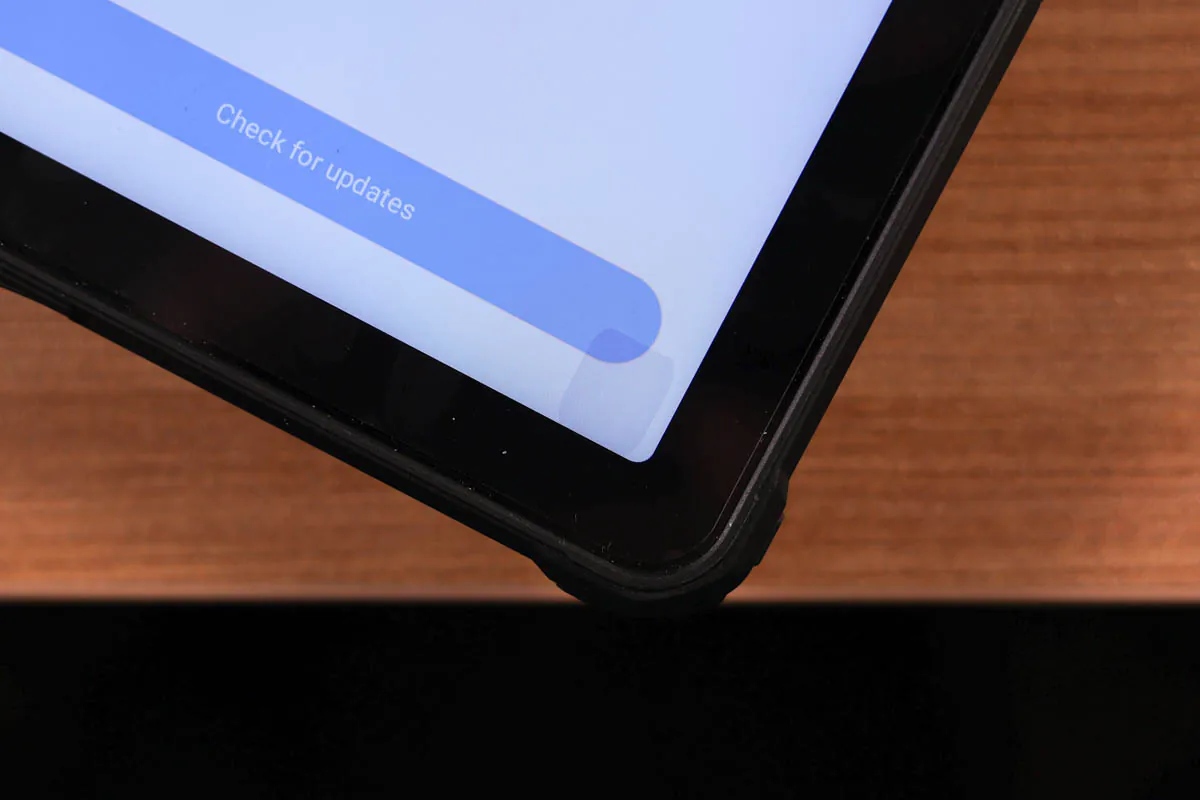
And – for some time, I couldn’t connect the device to my laptop; the tablet didn’t want to pass the control “relay” to it. After rebooting, this problem immediately disappeared, although it returned in the evening, which again – was fixed by a reboot. Plus – I found out that the tablet can charge devices connected to it. Which is generally very useful because its autonomy is precisely designed for that.
Oukitel RT8 battery life
The battery in the Oukitel RT8 is exceptional, considering both its price and in general. It’s a lithium-polymer battery with a capacity of 20,000 mAh. According to the manufacturer, with the original charger, it promises 4.5 hours from zero to 100%, which sounds absurdly long if you don’t take into account how long the battery lasts overall..

Again, the manufacturer promises 24 hours of continuous gaming, 37 hours of music playback, and 12 hours of video playback. Why gaming can last twice as long as video playback, I don’t know; usually, it’s the other way around.

However, in the PCMark Battery Test 3.0, the device predictably earns more than 26 hours. And since the test turned off at 20%, I think the device will easily last up to 30 hours before shutting down. Still, even after completing 18% of all gaming tests and testing the camera, I still had 7% left. At the same time, the system indicated that I still had about two hours left.
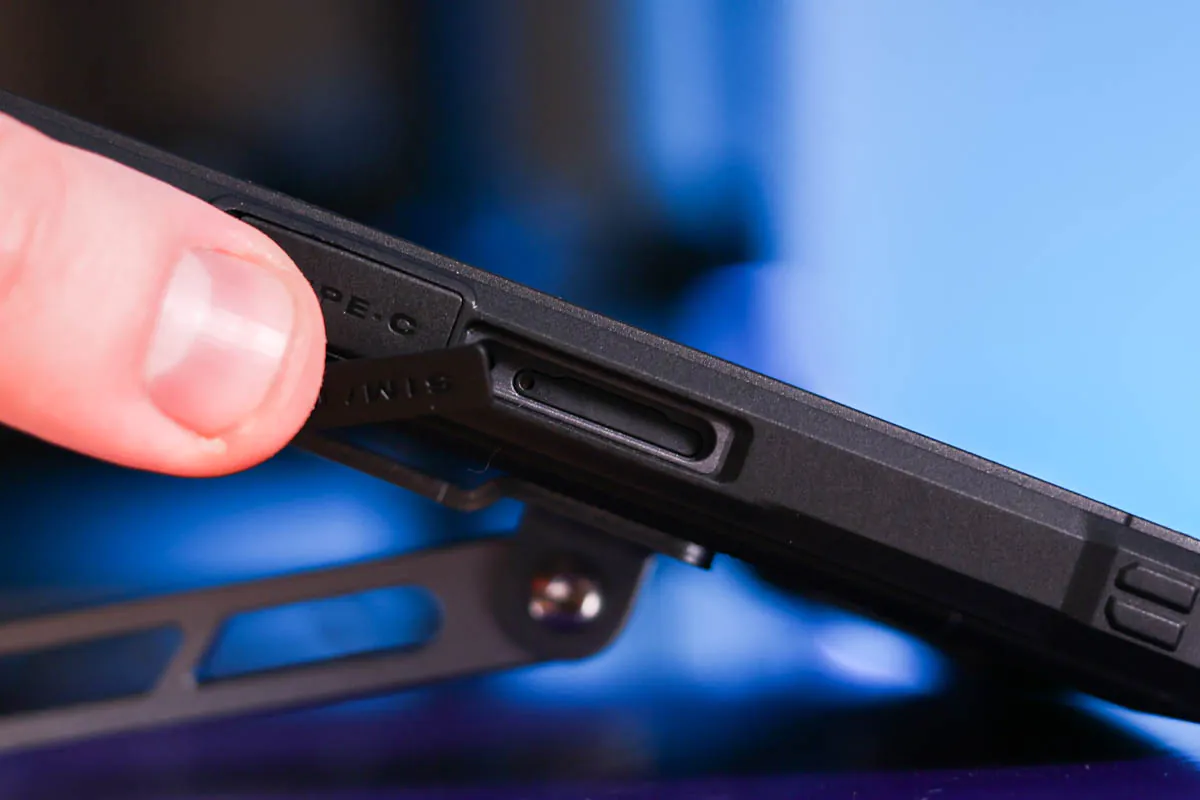
The charging, I remind you, is promised to be completed in 4.5 hours. In practice, although the charger outputs not 33, but 28 watts, it does so steadily… for the first few hours, then drops to 9-10 watts. A full charge does indeed take just over 4.5 hours. The charging graph is as follows:
18:48 – 6%
19:01 – 13%
19:32 – 29%
19:58 – 42%
20:23 – 54%
20:51 – 68%
21:13 – 77%
21:36 – 85%
22:13 – 92%
I’ll also note that the compatibility with non-branded chargers and power banks is excellent. All power banks provided 28 watts, and most chargers with a power output below 100 watts did the same. Remember, this is a budget MediaTek, and a rather old model at that.
Summary
Throughout the review, I constantly needed to remind myself that the cost of this tablet is $300. It’s rugged, built to military standards, has a genuine night vision camera, microSD support, Wi-Fi 5, a decent SoC, outstanding battery life, and good support for charging protocols. Overall, I’m very pleased with the Oukitel RT8 tablet.

Read also:
- Oukitel WP22 review: rugged smartphone, speaker and power bank!
- Oukitel RT3 review: “Unkillable” 8-inch tablet
- Cubot KingKong AX Rugged Smartphone Review: Sturdy Yet Elegant




